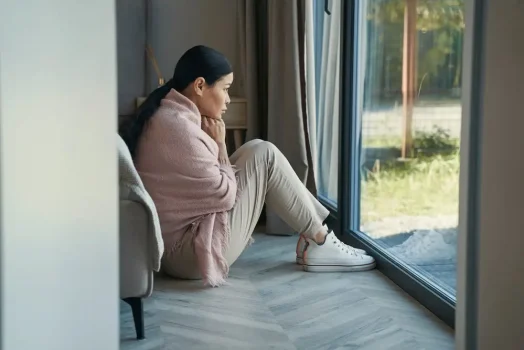Living with Anxiety
Even though we all try to maintain good physical health, we often forget to take good care of our mental health. There are millions of people worldwide who are affected by mental health issues like depression and anxiety. A number of recent events, including the Covid-19 pandemic and many ongoing global political and economic crises have had profound impacts on the mental health of people the world over, with stress and anxiety becoming more and more prevalent.
Most people, however, fail to acknowledge and manage these feelings. In our increasingly positivity-focused world, we are quick to brush things under the rug and insist on a “good vibes” and “positive” approach to life, while failing to deal with negative emotions appropriately. There is nothing wrong with not feeling your best all the time or experiencing unexplained anxiety. Allow yourself to see it, absorb it, recognize it, and accept it. In order to leave unhealthy emotions behind, it’s crucial that we make peace with the present moment and exercise mindfulness.
If you suffer from an anxiety disorder, looking into techniques that will allow you to reduce or manage your anxiety long-term, such as talk therapy and medication. However, lifestyle changes such as eating a well-balanced diet, limiting alcohol and caffeine, and taking time for yourself can also help reduce stress and anxiety. Anyone can benefit from these steps.
The 3-3-3 Rule For Coping With Anxiety
In most cases, anxiety is generally triggered by an external event such as a confrontation, the move to a new city, or losing a loved one or stability in your life. Alternatively, anxiety may be triggered by the unresolved emotions, feelings, or thoughts that are bottled up inside of you.
The good news is that there are a number of long-term and short-term therapies, as well as medications, that can aid in dealing with anxiety. Although treatment is the best option in the majority of cases, not everyone who is dealing with an anxiety disorder feels comfortable speaking to a therapist or seeking treatment at their current point in life. In the end, both treatment and self-help are essential to overcome anxiety disorders, but there are also some things you can do on your own to ease your mind during panic attacks or anxiety attacks.
Although it might not seem as extensive as other techniques, the “3-3-3” rule is an effective method for reducing stress and finding a sense of calm, even if you’re overwhelmed at work or on the go.
What It Is And How It Works
Whatever the source of your anxiety, the 3-3-3 rule asks you to focus on:
1. Sight
Observe your surroundings for a moment. Point out three physical objects in your immediate vicinity. Identify each one. Examine them carefully. For example; You see a bookshelf, a glass of water, and a lamp. Pay close attention to each object. Does the glass have a particular color or design? Is it clear? And what’s inside the glass? Are there any books on the shelf? Which ones are paperbacks and which are hardcovers? Taking in as many details about your immediate environment as possible will help bring you back to yourself.
2. Sound
After that, you should look around for three things that are both within your visual range and hearing range. Identify three sounds that you can hear. Again, paying attention to the details is necessary, for example; the volume of each sound, how far away they’re coming from, what their sources are, etc.
3. Touch
Last but not least, you should engage your sense of touch. Consider moving some of your body parts as you do. For example, it can be helpful to move your ankles, arms, and legs as you explore your body’s sensations. Try tapping your fingers, wiggling your toes, rotating your ankles, moving your hands, and so on. Focus on bringing your attention into your body and grounding yourself in the moment.
In conjunction with deep breathing, the 3-3-3 rule can help calm your body and mind both at the same time. You can use this technique to relieve anxiety, center your mind, and bring your attention to the present moment.
What The 3-3-3 Rule Can Do For You
Living with anxiety or an anxiety disorder is not easy but when you employ the right techniques, managing anxiety and panic can be easier. If you’re constantly struggling with managing your anxiety or being overwhelmed at work, you can practice the 3-3-3 rule.
Practicing this technique will help you:
- Disengage from negative feelings and emotions
- Stay away from unwanted thoughts by keeping your mind focused on the present
- Keep your mind from being consumed with panic by using distractions from your environment
- Keep yourself in the present moment by practicing mindfulness
Life Adjustment Team
Our Mission is to provide intensive outpatient psychiatric rehabilitation using a community outreach model that takes supportive, evidence-based treatment practices to our clients at home and in the community. We provide an environment where people feel safe. We believe each patient should be encouraged to identify their personal goals and partner with our Team to develop a treatment plan to accomplish them We are committed to interacting with everyone who works with our Team in an honest, courteous, and respectful manner. Contact us today to get started!








